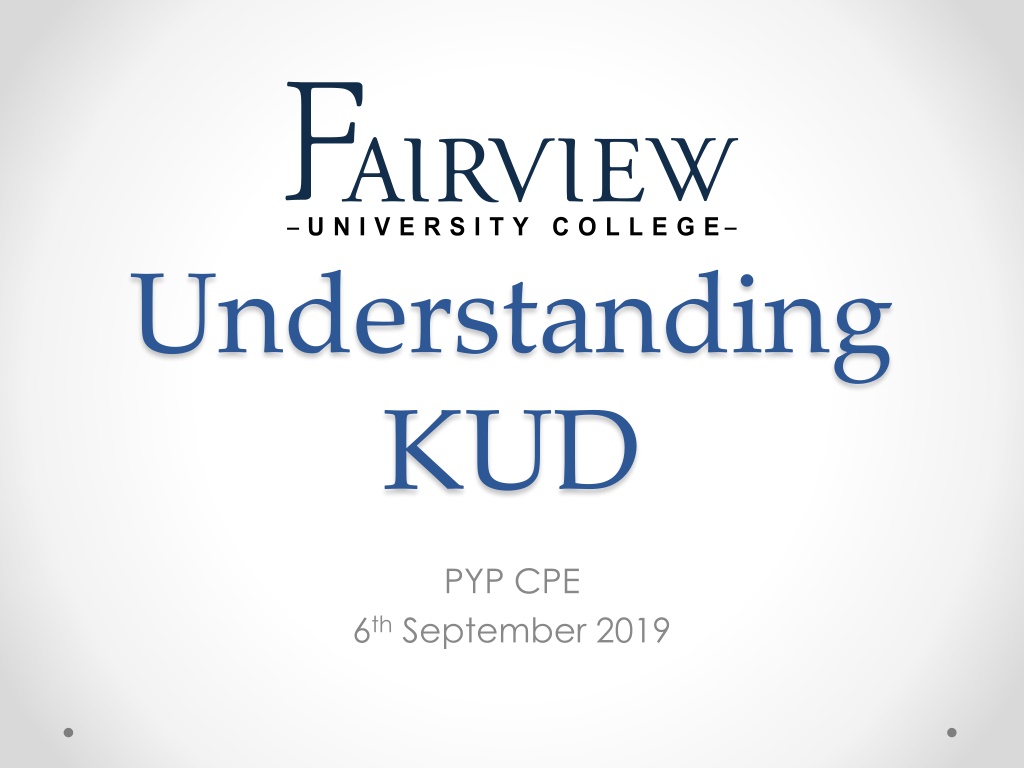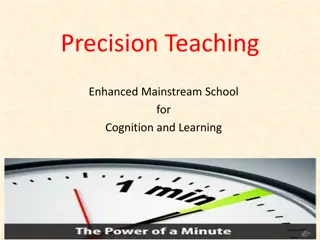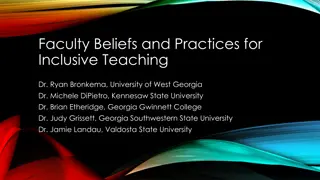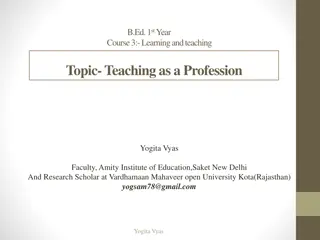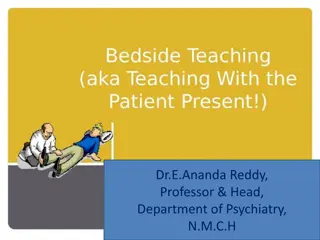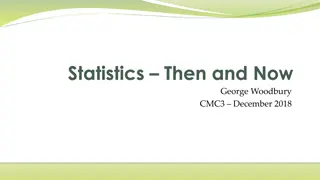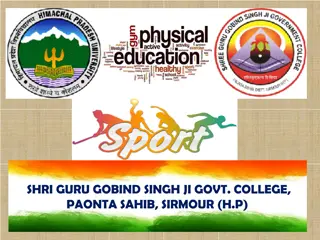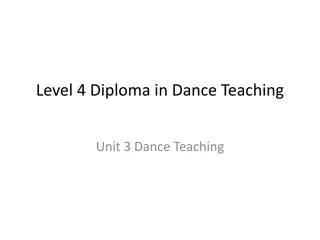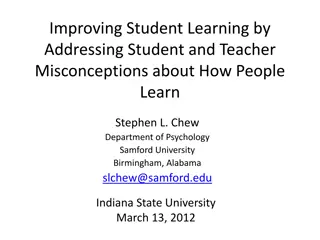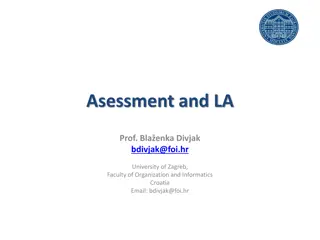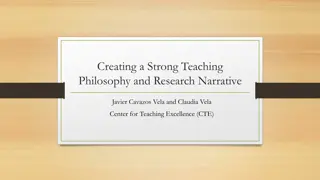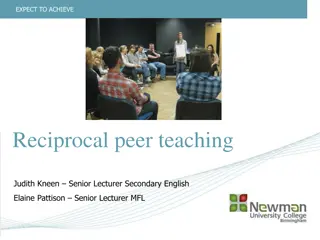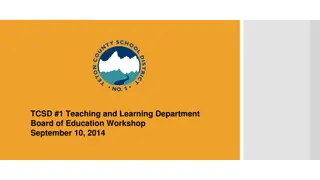Understanding KUD in Teaching and Learning
Explore the significance of Key Understandings and Developments (KUD) in effective teaching and learning, focusing on creating essential statements for successful educational practices. Discover key principles and strategies for enhanced instruction, assessment, and review of KUD statements in lesson plans. Uncover the connection between KUD and student outcomes, while enhancing comprehension and application of UBD principles.
Download Presentation

Please find below an Image/Link to download the presentation.
The content on the website is provided AS IS for your information and personal use only. It may not be sold, licensed, or shared on other websites without obtaining consent from the author. Download presentation by click this link. If you encounter any issues during the download, it is possible that the publisher has removed the file from their server.
E N D
Presentation Transcript
Understanding KUD PYP CPE 6thSeptember 2019
Short Ice breaker 3A s 1. Appreciation 2. Apology 3. AHA!
Sample Unit of Inquiry Central idea: (Big Idea/Generalization/CU) Properties of materials determine how people use them. Lines of Inquiry Properties and characteristics of materials (form) Changes materials go through (change) The use of materials for various purposes (function)
Learning Objectives Define KUD Explain that a KUD statement is essential for successful teaching and learning Distinguish the K from the U and from the D Write a KUD statement for my content area
Todays Agenda Presentation on what is and why KUD and how it connects to WALT, TIB & WILF Assess & review own KUD statements in lesson plans and resources Assess understanding of KUD
What is Teaching and Learning?
The 5 Principles for Effective Instruction
K (U) D The U: Learning & Teaching s Enduring Understandings Big Ideas (McTighe & Wiggins, 2006, p.149) Expansive ideas that frame the details (Kumpost, 2009, p.1) Generalizations (McTighe & Wiggins, 2006, p. 149)
K (U) D Without understanding there is no durable learning, no retention, no transfer, no capacity to think about content. And without understanding, there is little relevance to curriculum. - Carol Tomlinson
(K) U (D) K + D = L&T s Essential Outcomes Includes the information & skills needed to achieve the big idea (McTighe & Wiggins, 2006, p. 57) K = Learners need to Know o Facts, Places, People, Dates, Definitions D = Do o Skills, Behavioral Objectives, Outcomes (Strickland, 2011, p. 15)
What is WALT, TIB, WILF? WALT - WE ARE LEARNING TO These are the words used by teacher to relate to student the K component of the lesson plan WILF - WHAT I AM LOOKING FOR These are the formative assessments the teachers are looking for through activities related to the D in the lesson plan TIB - THIS IS BECAUSE The students should be able to say I UNDERSTAND THAT is our lesson today .this is related to U of the lesson plan
Sample Unit of Inquiry Central idea: (Big Idea/Generalization/CU) Properties of materials determine how people use them. Lines of Inquiry Properties and characteristics of materials (form) Changes materials go through (change) The use of materials for various purposes (function)
An Example KUD KNOW (WALT) the use of different materials UNDERSTAND (TIB) Materials are used in various purposes DO (WILF) List down the use of some materials OR Group the materials according to their usage Use your yellow hat to write the benefit(s) of some materials
An Example KUD KNOW (WALT) - Definition of verb and subject - How to conjugate verbs UNDERSTAND (TIB) - Understand that language is made up of patterns; if you can recognize the pattern you can make a good guess about the form DO (WILF) - Conjugate verbs to match subject (Example taken from Strickland, 2011, p.26)
How do we differentiate teaching and learning? Read KUD Handout (more examples of KUD and how differentiation can be done) 5 min
Why is KUD essential for effective T&L? The KUD ensures: -the learning goal is clear and consistent -all students are led to the same end result or outcome -regardless of the task or activity they are completing -all students receive the same key learning (KUD) Without a KUD, it is difficult to ensure the differentiated work will lead to the same purposeful goal for all students.
Activity (20 mins) Individually (10 mins), 1) Select an upcoming lesson plan/ resource 2) Identify the relevant content / standards 3) Improve on the K, U & D component As a team (10 mins), 1) Give feedback to members of your group on their KUD statements 2) Share with other grade levels / subjects
POLICY In the lesson plans & curriculum documents (for teachers reference) just write KUD In teaching resources (what will be shown to students eg: PPT, written on board) Reflect the following: K (WALT) U (TIB) D (WILF)
Exit task (5 min) QR code https://forms.gle/a9beyzWdRNqwrAEd6
References Kumpost, J. N. (2009). Understanding the understands in KUDS . www.differentiationcentral.com Vol 1, Issue 1, 1. McTighe, J. & Wiggins, G. (2006). Understanding by design, 2nd ed. Alexandria, Virginia: ASCD. Strickland, C.A. (2011). Differentiation of instruction at the high school level. ASCD: Alexandria, Virginia. Strickland, C.A. (2012). Strategies for respectful differentiation: Music. ASCD: Alexandria, Virginia. Strickland, C.A. (2012). Strategies for respectful differentiation: World Language. ASCD: Alexandria, Virginia. Tomlinson, C.A. & Strickland, C. A. (2005). Differentiation in practice: A resource guide for differentiating curriculum Grades 9-12. ASCD: Alexandria, Virginia. (2007). Tools for high quality: Differentiated instruction. ASCD, 12. (2012). LTHS professional learning communities glossary. LTHS: LaGrange, IL.
